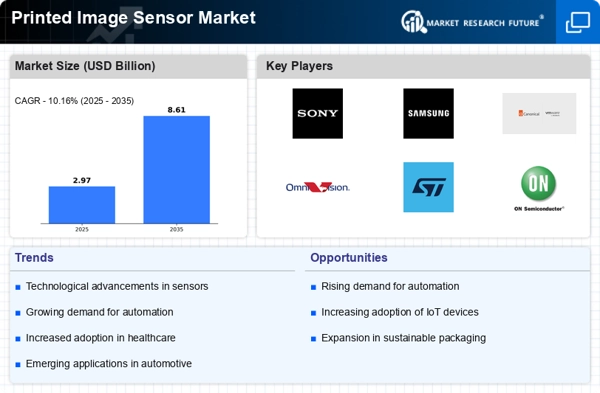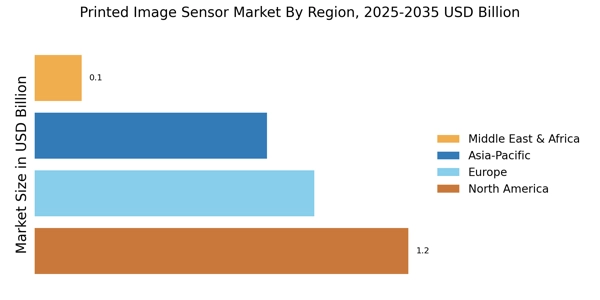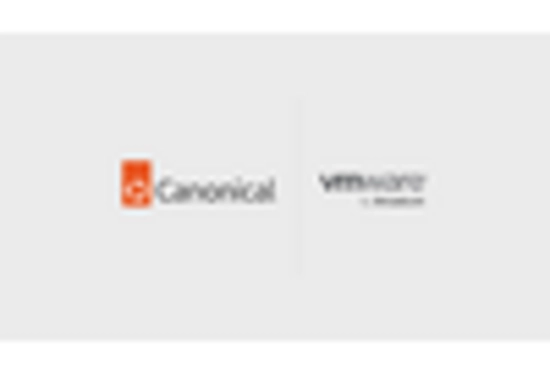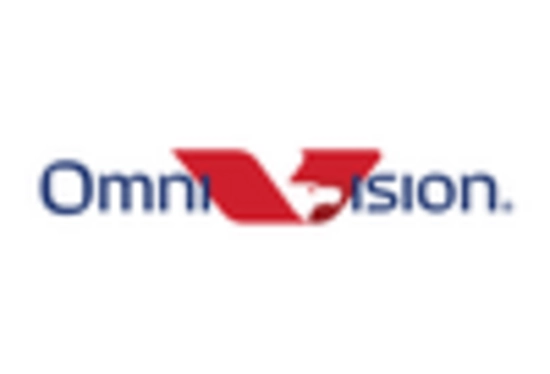Integration with Smart Devices
The integration of printed image sensors with smart devices is emerging as a key driver for the Printed Image Sensor Market. As the Internet of Things (IoT) continues to expand, the demand for smart devices equipped with advanced imaging capabilities is increasing. Printed image sensors are being incorporated into a wide range of smart devices, including smartphones, tablets, and smart home systems. This integration not only enhances the functionality of these devices but also improves user experience through better imaging quality. Market analysts predict that the proliferation of smart devices will contribute significantly to the growth of the printed image sensor market, with an expected increase in demand for sensors that can support high-resolution imaging and real-time processing.
Advancements in Sensor Technology
Technological innovations are playing a pivotal role in shaping the Printed Image Sensor Market. Recent advancements in sensor technology, such as the development of organic photodetectors and flexible sensors, are enhancing the performance and versatility of printed image sensors. These innovations allow for the production of lightweight, cost-effective, and high-performance sensors that can be integrated into a variety of applications. The market is witnessing a surge in the adoption of these advanced sensors, particularly in the fields of consumer electronics and automotive imaging systems. As manufacturers continue to invest in research and development, the Printed Image Sensor Market is likely to see further enhancements in sensor capabilities, which could lead to new applications and increased market penetration.
Focus on Cost-Effective Manufacturing
Cost-effective manufacturing processes are becoming increasingly important in the Printed Image Sensor Market. As competition intensifies, manufacturers are seeking ways to reduce production costs while maintaining high-quality standards. Innovations in printing technologies and materials are enabling the development of more affordable printed image sensors, which can be produced at scale. This shift towards cost-effective manufacturing is likely to attract new entrants into the market and stimulate growth. Furthermore, as production costs decrease, the accessibility of printed image sensors is expected to increase, allowing for broader adoption across various industries. This trend may lead to a more dynamic and competitive landscape within the Printed Image Sensor Market.
Rising Demand for High-Resolution Imaging
The Printed Image Sensor Market is experiencing a notable increase in demand for high-resolution imaging solutions. This trend is driven by the growing need for enhanced image quality in various applications, including consumer electronics, automotive, and medical devices. As consumers and industries alike seek superior imaging capabilities, manufacturers are compelled to innovate and improve their sensor technologies. According to recent data, the market for high-resolution image sensors is projected to grow at a compound annual growth rate of approximately 10% over the next five years. This growth is indicative of the broader shift towards advanced imaging solutions, which are becoming essential in sectors such as surveillance and healthcare, thereby propelling the Printed Image Sensor Market forward.
Growing Adoption in Automotive Applications
The Printed Image Sensor Market is significantly influenced by the increasing adoption of imaging technologies in automotive applications. As vehicles become more advanced, the demand for high-quality imaging systems for safety and navigation purposes is on the rise. Printed image sensors are being utilized in various automotive features, including advanced driver-assistance systems (ADAS) and rear-view cameras. The automotive sector is projected to account for a substantial share of the overall image sensor market, with estimates suggesting that it could reach a valuation of over 5 billion dollars by 2026. This trend underscores the importance of printed image sensors in enhancing vehicle safety and functionality, thereby driving growth in the Printed Image Sensor Market.

















Leave a Comment